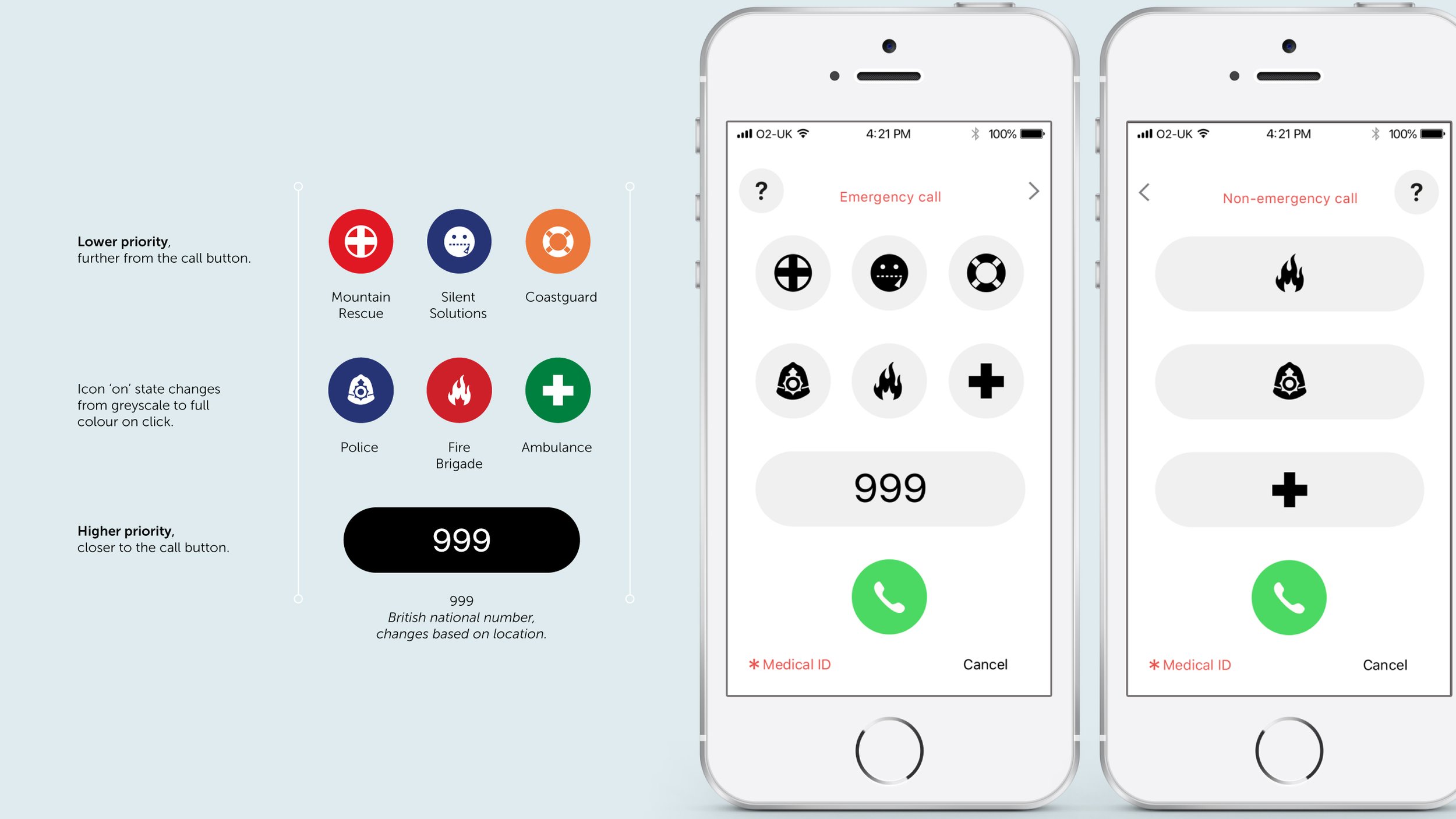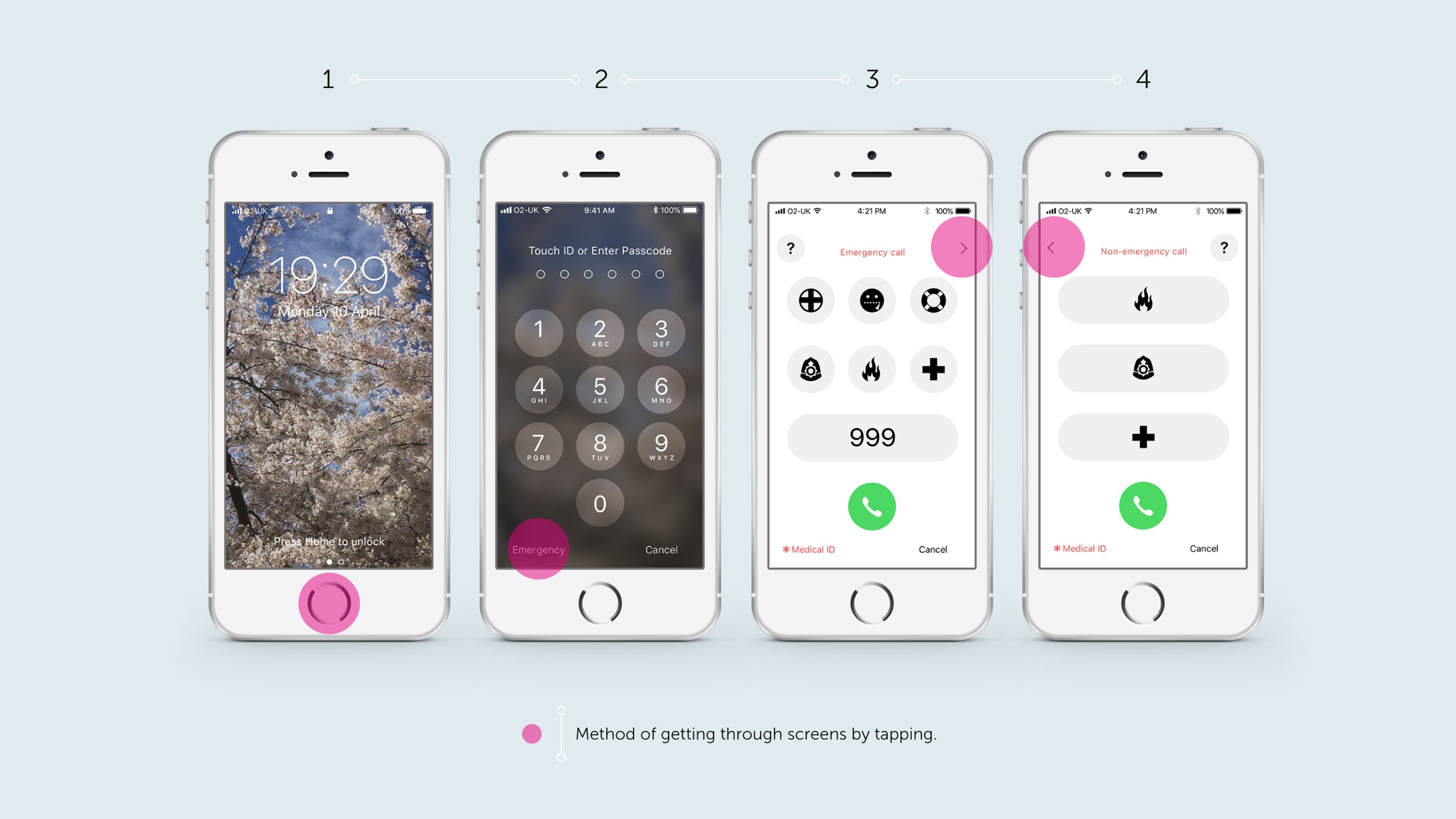SILVER AWARD | TECHNOLOGY CATEGORY | CREATIVE CONSCIENCE
Making every second matter
UX / UI / Service Design
Self-Initiated | Falmouth University

Do you know what the 112 number is used for? What about 101 and 111?
Opportunity
At over 80-years-old, the services currently suffer from a lack of education and accessibility.
Audience
This encompasses all age brackets, but is for those who rely on smartphones for communication.
Insight
Where iconography is a universal language, associating imagery with scenarios can offer faster reaction times than remembering sequences of numbers.
Outcome
Reinvention of the emergency services in order to fully utilise technology of the 21st Century.
About
With over 80-years-of-age, the emergency services are an incredible invention that have saved billions of lives all over the world. Whilst responders and operators do a fantastic job already, accessibility and education on the user side is sub-par. People often confuse non-emergency numbers such as 111 and 101 (medical and police respectively), and people often default call 999 (or their respective) as they know no other number, or simply can’t remember. With current 21st century innovations in technology, this potentially means that more lives could be saved if we took advantage of this to improve our services.

A small research group was selected and they were initially prompted by what they thought each service looks like to them. Designing by committee meant that I was able to see a general trend in how people view certain cues. This is incredibly important for a project like this, where we’re relying on the icons to be as succinct as possible so users don’t become confused during an emergency scenario.
From this stage, I designed the iconography and used Sketch to run UI tests to ensure that the design was fit for purpose.

An education element was proposed, which meant that users could gain more information on a service of their choice.
The use of landline isn’t to be made redundant through this, so education is still imperative. Contrarily, smartphone technology would provide shortcuts for these services that could potentially cut up to 15 seconds in initial conversation from the operator. Every second matters.


A discovery was made that meant that those dialling “55” (victims of domestic abuse, terrorism etc) would need to take extra steps to get help. A lot of this is down to the victim being unable to speak where noise is detrimental to their survival.
An efficient method here could be to switch to a private instant messaging service instead. The system could mute the phone, turn brightness low, and log conversations as evidence for later.
Further scenarios looked into medical use, and how the system could potentially speed-dial services based on erratic movement (seizures), and how wearable tech could use live data to inform responders moving to the scene.



